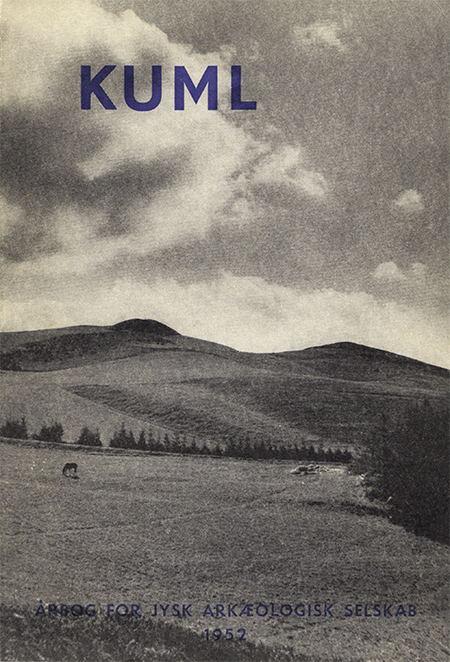En jydsk antiksamling
DOI:
https://doi.org/10.7146/kuml.v2i2.24900Keywords:
Samling, JyllandAbstract
A Collection of Oriental and Classical Antiquities in Jutland
Between 1784 and 1803 there existed at Aarhus an interesting private museum of antiquities and coins belonging to the ex-premier 0. Høegh Guldberg, Lord Lieutenant of Aarhus County; the majority of the objects contained therein are now in the National Museum in Copenhagen. When in 1949 a chair of classical archaeology was inaugurated in the University of Aarhus three of Guldberg's antiques, figs. 1 and 2, returned to Aarhus. This time they formed part of a type collection of objects from the ancient Mediterranean and West-Asiatic cultures which was deposited by the National Museum to serve as study material in the University courses. In 1951 the classical antiquities and casts belonging to the Art Museum at Aarhus were transferred to the University; the antiquities were formerly in the possession of the sculptor Vilhelm Bissen who is said to have acquired them in Italy (One of them is illustrated in fig. 3).
In addition the University Collection has received a number of gifts and has purchased other specimens in the art market. Among the more important recent acquisitions the first to be mentioned is an Egyptian mummy of the 21st dynasty with its mummy-board and coffin, figs. 4 and 5; according to the inscriptions it is the remains of the priestess Ta-ba-set of Amon's temple at Thebes, and it presumably came from the Deir al-Bahri cache. Western Asia is represented by an Astarte figurine from Central Syria, fig. 6, which is of the same type as local works of art of the period 1900-1750 B.C. The Attic kylix with a red-figured interior picture, fig. 7a-b, is reported to have been found at Athens in 1860 or 1866; its shape and decoration date it to the late archaic period and make an attribution to the Pithos Painter plausible. A group of pottery and a few iron objects, fig. 8 a-e, seem to have been taken from a 7th century tomb in South or Central Etruria; Etruscan, too, is the jug fig. 9, of the late 7th century B.C. A late archaic bearded terracotta head, evidently Tarentine, fig. 10, and a kantharos of Gnathia ware or rather a related Central Italian manufacture, fig. 11, close the enumeration; the latter specimen was found in the Baths of Nero at Rome, a statement which is likely to mean that the cup belonged to a Hellenistic burial in a lower stratum.
At the end of the article the collection of casts is briefly dealt with. It was mainly acquired in the years 1877-1906, most of it under the supervision of the famous art-historian Julius Lange, who died in 1896.
P.J. Riis
Downloads
Published
How to Cite
Issue
Section
License
Fra og med årgang 2022 er artikler udgivet i Kuml med en licens fra Creative Commons (CC BY-NC-SA 4.0).
Alle tidligere årgange af tidsskriftet er ikke udgivet med en licens fra Creative Commons.


